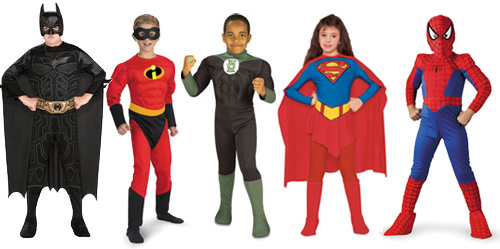Greetings from Northern Vermont,
It has been a crazy week, and I’ve had some time to reflect. Last week there was a confirmed case connected to Wendy’s high school, and as per her doctor’s recommendation we pulled her out, got a doctor’s note, and began the process of getting her tutored. I asked if we could get the tutoring remotely because I planned on bringing her up to Vermont to ride out the coronavirus up here.
Because of Wendy’s multiple medical issues, even though she is young and in shape, she is in the twenty percent of people who are at high risk. It hurts my heart when people say that “only” twenty percent are at risk, because their “only” is my “everything.” When I had spoken to her doctor, she laid it out very clearly to me: there is no vaccine, there is no treatment, and if you end up on ECMO, you are going to die, because they can’t do anything else.
So as far as I was concerned, we needed to keep her safe, no matter what. She and her sister are my everything, not just a portion of the at risk population.
When Wendy called me on Monday morning (3/9) because of the coronavirus case connected to her school, I had just arrived in my parking lot of my own school (I am a middle school teacher at a private school a few miles away.) I informed my front office that I had to go back, told Wendy I would drive around to the back of the school, and then bring her home. She hasn’t been back since.
I then went to my own principal, and together we worked out a “remote teaching” schedule. The computer teacher put a large screen in my room, and colleagues manned the room on their prep periods while I taught classes from my house. This way, I wasn’t bringing home the virus to my daughter without knowing it. I taught this way for the remainder of the week, until the 13th, and now the school is on our regularly scheduled vacation. I am so indebted to my colleagues for doing this for me. But to be honest, I still wasn’t sleeping. I was worried that my other daughter Penny or my husband would bring home the virus. We began to cancel social engagements left and right, soccer practices, karate classes, yoga, etc. My husband asked to work from home, but still had to go in a few times to check on things.
I pulled her younger, healthy sister out of school on Wednesday after Governor Baker said that students would not be penalized for their absences, and when I asked for guidelines on how to teach Penny I was told that teachers were instructed not to give out any work, or any guidelines. Schools have since been closed by the governor until April 7, but they have not been given any work, and will not be given any in the name of equity, but also because teachers’ unions don’t want to set a precedent. Wednesday night President Trump gave his Oval Office address and the NBA shut down for the season. Stock futures plummeted.
On Thursday, 3/12, after I taught my online classes, we made our way up to Vermont. I had packed the car early in the morning. Five days’ worth of clothes for each of us, lots of arts and crafts, a few puzzles, some food items I knew Michael wouldn’t eat, all of Wendy’s medical supplies, some games, school books, snow pants and outdoor gear, and yoga mats. I made clear to the girls that there would be no stops. No bathroom, no gas, we were travelling door-to-door. After we unpacked at my parents’ house (they are not here, they’re snowbirds, splitting their year between Vermont and Florida,) I looked to see what they had and what I would need. The answer: they didn’t have that much and I was going to need to do a lot of buying.
This was a setback, as I had already prepared our house in Massachusetts. Now I had to recalculate. I already had all of Wendy’s medical supplies, but we pretty much needed to get all the food, and I was planning on being here for a month. We went to the supermarket and bought enough for four weeks of staying here. People looked at us like we were crazy. Who needs all that food? We do, because I don’t plan on going back out.
Here’s the deal. There are people who have coronavirus with no symptoms, or minimal symptoms, and after testing, scientists at Princeton have found that the coronavirus can stay alive for up to three days on stainless steel and plastic. So someone who doesn’t know they are sick can leave the virus on an object three days ago, and my kid can get sick from it today. That’s terrifying.
Moving up to Vermont was strictly a numbers game. There are fewer people in the state of Vermont than there are within the city limits of Boston. More people, more potential illness. Fewer people, less potential.
But when I see citizen continue to go to amusement parks, and wearing green to go to Saint Patrick’s Day parties at bars, or being told to continue going out to dinner, all I want to tell them is PLEASE STAY HOME. Your social distancing will lead to fewer cases all at once, and fewer cases all at once means that our medical system won’t collapse under the strain.
My friend Susan lives in Rome, and today (3/17) I was going to fly on a plane and visit with her. She works at the UN, in the FAO, and I was going to speak to a committee there about foodborne illness, which is originally how Wendy got sick. Through her unfortunate experience of living in the age of coronavirus in Italy, Susan has been coaching me on what to expect, how to prepare, and when I suggested Vermont, she thought it was the right move. In Italy the medical system has collapsed, and the entire country is in lock down, because Italians didn’t take it seriously, didn’t act fast enough.
We can do better. We have to do better.
Thank God my parents have this house. Thank God I have access to it. Like everyone else, I’m trying to navigate the daily activities of my kids so we all don’t go crazy. We have a schedule, they have academics, and I’m grading papers and working toward my virtual schooling that I will be transitioning to. We go for daily walks, we are working on a 1000 piece puzzle of Star Wars. After dinner we play UNO and watch something on Netflix on a laptop. (My parents don’t have cable.) We eat lunch and dinner together, and I’m trying to teach them to monitor their snacks, how to do laundry, and how to entertain themselves.
I’ve started offering yoga every morning at 9 am on Facebook Live, as a way to connect to the outside world, and it’s nice to connect to my friends and bring something good into their lives, because like them, I’m in self-isolation. But for us it’s pretty extreme and the potential consequences are dire.
Honestly, I’m finally sleeping again because we are here, though I miss my husband who is still at our home, with our cats, and who isn’t sure when he will be able to make it up. Wendy thanked me when we got here, she had been worried too. The girls only want limited knowledge of what is going on in the world, and they don’t want me to talk about number of deaths. so a lot of that information I have to keep to myself.
Wendy has mentioned to me that in a way she feels like a princess in a tower, like in the fairy tales. I think that’s an accurate way of putting it. It’s better than being a princess in a hospital bed. So I guess if we are working through the roles of the fairy tale, then I’m playing the part of both the knight and the dragon, protecting and guarding the kids.
I have no way of knowing what will happen, I can only do what I can to protect my kids.
Please, don’t go out unless you need to. Practice social distancing so kids like my Wendy, and families like my family, don’t have to practice Extreme Social distancing. We are scared enough every day as it is.











